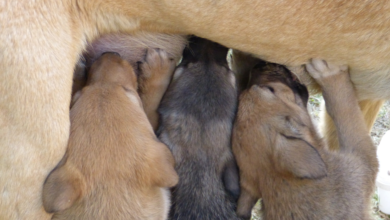6 Common Dog behavior problems and solutions

Introduction to common dog behavior problems and solutions
Dogs are complex creatures with their own unique personalities, but just like humans, they can experience changes in behavior for various reasons.
Understanding these changes and knowing how to address them is essential for maintaining a happy and harmonious relationship with your furry friend.
In this guide, we’ll explore some common behavioral changes in dogs and provide practical solutions to help you navigate them effectively.
6 Common Dog behavior problems and possible solutions
1. Separation Anxiety
One of the most common behavioral changes in dogs is separation anxiety, which occurs when dogs become distressed or anxious when left alone.
Signs may include destructive behavior, excessive barking, pacing, or house soiling.
To address separation anxiety, gradually acclimate your dog to being alone by practicing short departures and providing them with interactive toys or puzzles to keep them mentally stimulated. Additionally, create a comfortable and safe space for your dog to retreat to when you’re away.
2. Fear and Phobias
Dogs may develop fears or phobias of specific stimuli such as thunderstorms, fireworks, or unfamiliar objects. Signs may include trembling, hiding, panting, or excessive drooling.
To address fear and phobias, desensitize your dog to the trigger gradually by exposing them to it in controlled, positive environments.
Use counterconditioning techniques by pairing the trigger with something your dog loves, such as treats or play, to create positive associations and reduce fear.
3. Aggression
Aggression in dogs can manifest in various forms, including growling, barking, lunging, or biting. It can be triggered by fear, frustration, territoriality, or resource guarding.
To address aggression, consult with a professional dog trainer or behaviorist to develop a behavior modification plan tailored to your dog’s specific triggers and needs.
Avoid punishment-based methods, which can escalate aggression, and focus on positive reinforcement and desensitization techniques to modify behavior.
4. Excessive Barking
Excessive barking is a common behavioral issue in dogs and can be triggered by boredom, anxiety, or territoriality.
To address excessive barking, identify the underlying cause and address it accordingly. Provide mental and physical stimulation through regular exercise, interactive toys, and obedience training.
Use positive reinforcement to teach your dog the “quiet” command and reward them for calm behavior. Additionally, manage the environment by minimizing triggers and providing distractions.
5. Destructive Behavior:
Dogs may engage in destructive behavior, such as chewing furniture, digging, or shredding household items, due to boredom, anxiety, or lack of exercise.
To address destructive behavior, provide your dog with appropriate outlets for their energy and mental stimulation, such as interactive toys, puzzle feeders, and daily walks or play sessions.
Use positive reinforcement to encourage desirable behavior and redirect destructive tendencies towards more appropriate activities.
6. Changes in Appetite or Eating Habits
Changes in appetite or eating habits can indicate underlying health issues, stress, or dietary preferences.
Monitor your dog’s eating habits and consult with a veterinarian if you notice significant changes, such as refusing food, sudden weight loss or gain, or vomiting.
Address any underlying health issues and ensure your dog’s diet is balanced and appropriate for their age, breed, and activity level.
Conclusion:
Understanding and addressing common behavioral changes in dogs is essential for promoting their well-being and maintaining a harmonious relationship with your furry companion.
By identifying the underlying causes of behavioral changes and implementing positive reinforcement, desensitization, and management techniques, you can help your dog overcome challenges and thrive both mentally and emotionally.
Remember to be patient, consistent, and compassionate as you work together to address your dog’s behavioral needs, and seek professional guidance when needed to ensure the best outcome for your beloved pet.




